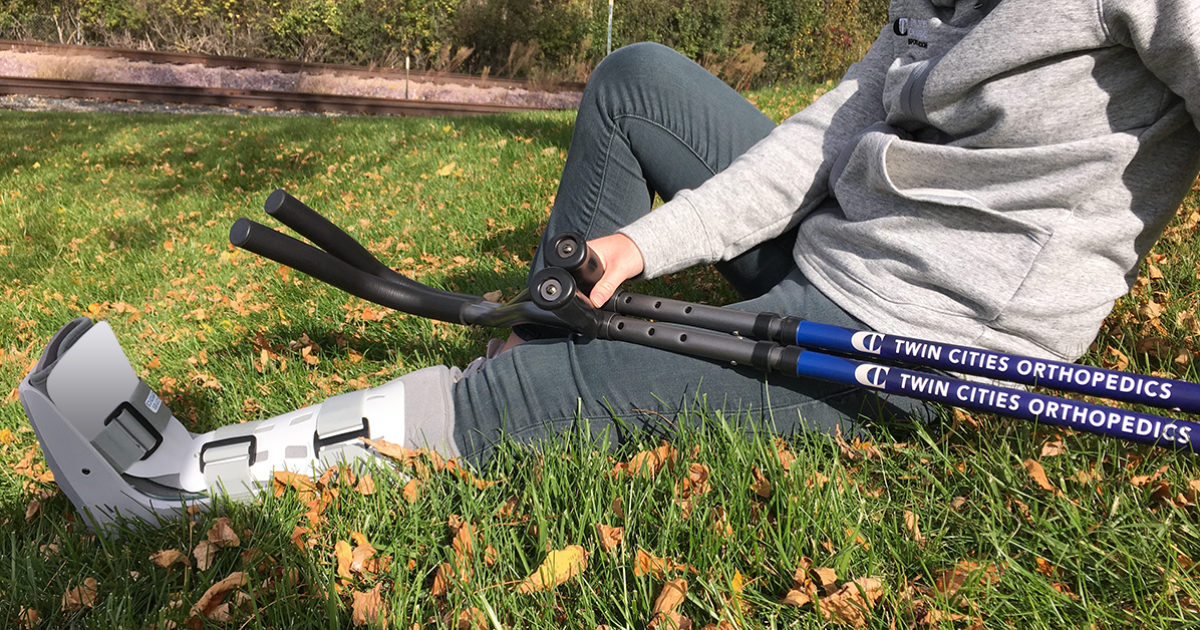
October 13, 2016 - TCO
How to choose the right crutches
After an injury to the knee, ankle or foot, many patients are fitted for crutches to remain mobile while their injury heals. If you’re like most people, you weren’t even aware you had options, but as many people have experienced — finding the best crutches can make the transition and healing process much easier and less frustrating.
We want to help you find crutches that fit properly, feel comfortable and allow you to function, balance and move about naturally. Also, we want to help you make sure your home is ready for someone with crutches. Our goal is always to help patients feel educated, informed and well taken care of every step of the way..
Fit, feel and function
Below are tips for finding the best crutches with the ideal fit, feel and function for your everyday lifestyle. If you’re wondering where to get crutches, how to use crutches or the best way to prepare your home for using crutches, look no further. The friendly physical therapy teams at Twin Cities Orthopedics promise to assist you in every way possible to make sure you always go home feeling comfortable and confident. Lean on the expert staff for advice, and never be afraid to ask questions — it’s why we’re here!
Fit
The American Orthopaedic Foot & Ankle Society’s guide for how to use crutches recommends having someone assist you in the fitting process. The top, padded part of the crutch should NOT touch your armpit while standing up straight. Instead, someone should be able to fit two fingers under your arm.
While still standing up straight and letting your arms hang down to your sides, the crutch handle should be at the same height as the crease of your wrist. You’re doing it right if your elbows are slightly bent when you grip the handles.
Feel
The first time you use crutches for walking will likely be awkward and a bit uncomfortable since it’s not something we’re used to doing. However, while you are being fitted for crutches you should practice using different styles to determine which is most comfortable for you. Remember, these are going to assist you every day.
With the assistance of trained staff, practice walking, sitting/standing and climbing stairs. Not only will the practice help you feel more comfortable when you get home, but you may find out you prefer one style over another.
Function
While you are testing your crutches for fit and feel, be sure to visualize yourself in your home, work and everyday environments. You need your crutches to help you function as close to normal as possible, so make sure you’re able to perform all of the necessary actions for your daily life with your chosen crutches. If not, you may need to discuss with your doctor or physical therapist about additional options.
Preparing your home
By making some simple safety modifications to your home, you can make the transition to using a walking aid much easier and help prevent slips and falls. This is a great opportunity to enlist family and friends to help. The American Academy of Orthopaedic Surgeons recommends these useful tips:
- Remove things that may cause you to trip and fall, such as throw rugs, toys and electrical cords.
- Arrange furniture so you have clear paths between rooms.
- Clean everything off your stairs.
- In fact, clean up the clutter everywhere!
- Avoid walking in the dark by installing nightlights in your most-traveled paths.
- In the bathroom, use non-slip bath mats and, if possible, use a raised toilet seat, shower seat and grab bars.
- Find a backpack, fanny pack or apron with pockets to carry around household items.

